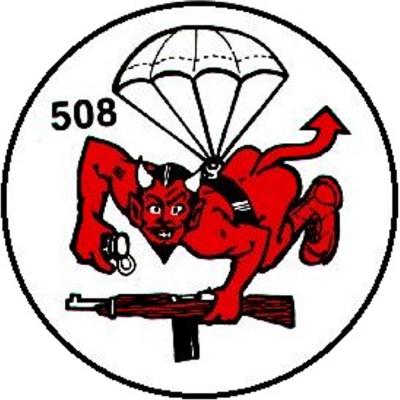|
|
. 508TH
PIR . PARACHUTE
Infantry Regiment |
|
![]() Roster
Roster
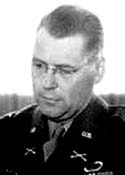 <- Major Roy E. Lindquist (here,
in Colonel's uniform)
<- Major Roy E. Lindquist (here,
in Colonel's uniform)
508th PIR October 20, 1942 was officially created with camp Blanding in Florida under the orders of Major Roy E. Lindquist. At the beginning of September of this same year, it Major Lindquist had asked to receive the commander of a regiment.
The regiment consisted at first, mainly of men coming from the 502th PIR and from the 26th Infantry Division and from the airborne school. At the end of October, the beginning of November, more than 4500 men appear. Most come directly from Recruitment Centers. Of this number, only 2300 will remain.
In mid-December, it 508th PIR reached its fullest at Camp Blanding, Florida.
Soon, Roy E. Lindquist is promoted to the rank of Lieutenant Colonel. The basic training of the infantry is intersected by drills, races, climbing of cord. Contests are organized between the companies to select the best shooter, the best tight order as well as the best physical prowess’s. It was during a competition that Sgt Andrew J Skilvis proposed for emblem of the regiment a red devil equipped with a parachute, with similar war cries “Diabolo!” From the day when the first recruits arrived, the unit does work in order to become paratroopers.
On February 3, the 1st battalion was the first who left Camp Blanding for Fort Benning. After 2 weeks, the days of the first jump arrived. Lt. Col. Lindquist at the end of March is promoted Colonel.
After Fort Benning, the regiment was sent to Camp Mackall, North Carolina. They learned their first lesson which will become a custom afterward, that is to build their own districts. 6 weeks spent in the camp served for studying the problems of a unity that must move through swamps and sands.
On May 21st, 1943, the regiment is transferred to Cheraw to participate in its first maneuver, like unit of infantry on the ground against 101st Airborne. For 508th PIR was a great success. The weather was very bad, it rained all week. Watchwords are " aggressive, mobility and precision " and to that end, the men had to move all night long on 21 km.
June and July were used as tactical training to the faith on the ground but also into airborne. Marches and exercises commando of infiltrations are also organized. At the end of August, the command distributes permissions to everyone.
After this period of rest, the 508th PIR was transferred to Taylorsville, Tennessee to take part in maneuver within 2nd Army.
On October 5, a night jump is programmed. But due a navigational error, the 1st battalion is largely dispersed. On the other hand, for the remainder of the regiment it is a success, all the objectives are accomplished.
Directly after, other maneuvers follow. Then, 508th PIR is returned to Camp Mackall to prepare to embark overseas.
On December 20, the regiment was sent to Camp Shanks near New York. The Christmas Day, the regiment is in alarm, the men undergo a last examination. On December 27, 1943, 508th PIR embark on board the USAT James Parker. Early the 28, the men look at the statue of Liberty.
On January 8, 508th PIR landed at Belfast. First home: County of Antrim. After 2 months, 508th PIR was attached to 82nd Airborne Division. The regiment was sent via the Scotland’s sea then by train in the city of Nottingham, England. The camp is located 10 minutes from the city.
In England, the regiment trained in the division and prepare for future mission.
The commandments of the various battalions are assigned, Lt. Col. Herbert F Batcheller for the 1st, Lt. Col. B. Thomas J. Shanley and 2nd Lt. Col. G. Mendez to 3rd.
On May 28, the Red Devils are transferred to the nearest aerodromes. 2nd battalion as well as the regimental HQ move towards of Saltby airfield. The 1st and 3rd battalions move towards Folkingham airfield. The two sites are in the sector of Nottingham-Leicester. From this moment, waiting, with the last checks, day like night.
On June 5, 22:30 p.m., C-47 are heared. The men embark for their first combat jump. They ride in bus forming 3 convoys, one by battalion.
The operation “NEPTUNE” was the airborne phase “OVERLORD”. 82nd Airborne was one of the components principal to the operation. Being stripped of his 504th PIR, the 507th and 508th were attached for this operation. The 82nd's mission was to destroy the principal German bridges which were essential for the supply, to control the roadways leading to the beaches across the land flooded. More than 10.000 paratroopers of 82nd landed in Normandy by parachutes or glider on June 6th, 44.
508th was responsible for the south-western sector for 82nd Airborne. Their objectives were crossing bridges Douve River located at Brienville and with Beuzeville-la-Bastille. The regiment is transported by C-47 of 313rd and 314th TCG. Initially, the paratroopers had landed on DZ “N” in the North of Picauville in four groups. Unfortunately, this DZ was in sector of the 91st German Division. Pathfinders which preceded the invasion force were nailed to the ground by the enemy. They succeeded in positioning a beacon EUREKA and two signal lights.
The formation of the plane was broken by the clouds and the German FLAK. On June 6th, between 2:08 and 2:20 a.m., the 508th lands in Normandy. The paratroopers were largely dispersed, the majority of the men landed in the east of the DZ and above Merderet. Some landed to 9 km from Cherbourg.
Only 17 sticks of 132 landed on or near the DZ, 16 more than 1500 meters, 30 others in a circle of 3.000 meters.
The regiment was to be divided into 4 main groups. The 1st was ordered by Col. Lindquist. 2nd by Major Warren (in the beginning, it was to be ordered by Lt. Col. Batcheler, which ordered the 1st battalion, but he will be reported missing on June 6th, and was later discovered dead.) The 3rd is ordered by Lt. Col. Shanley. The last group is composed of G Company under the orders of Capt. Novak, reinforced by a small group made up of 25 men ordered by Capt. Simonds. In each group one finds men of 505th PIR, 507th PIR and 508th PIR and even of units of the 101st Airborne Division.
After landing, the paratroopers tried to come together to begin their mission.
Due to the great confusion, the units were reduced in number as to occupy western bank of Douve River. In its place, the paratroopers met along a fill of railroad off the line of Cherbourg-Carentan.
Lt. Col. Shanley commanded a composite group in the west of Ste Mere Eglise in the village of Caponnet to Picauville. It held the only bridgehead on the Merderet River against a strong enemy concentration. Capt. Jonathan E Adams CO Company A had a group of 1st battalion in the south of the position of Shanley. They started to carry out its first objective, taking the bridge over the Douve River in Pont l’Abbé. The group of Shanley met a strong German resistance before reaching the city. The Germans had order to counter-attack and push back American. Lt. Col. Shanley understood that it would not be strong enough considering the number of man whom he had with him. He ordered a retreat on a hill, the n°30. There he ordered his men to be cut off. During 2 days, the unit underwent attacks on German trying to overflow without any success. This action was seen as decisive. It enabled the airborne to establish a solid bridgehead near to Mederet River. Corporal Ernest T. Roberts, Pvt. Otto K. Zwingman and Pvt. John A. Lockwood were cited for their courage during these engagements. They observed a combined infantry and panzers are preparing to attack. From their observation post located in a building at Haut Gueutteville they had to contain the German attack during 2 hours, the time needed by the forces of Lt. Col. Shanley to prepare a circular defense on hill 30. Col. Lindquist included all the men of the 508th to the east of Merderet River with Chief-du-Pont, and direct them on the other side of the river to support the positions of Lt. Col. Shanley.
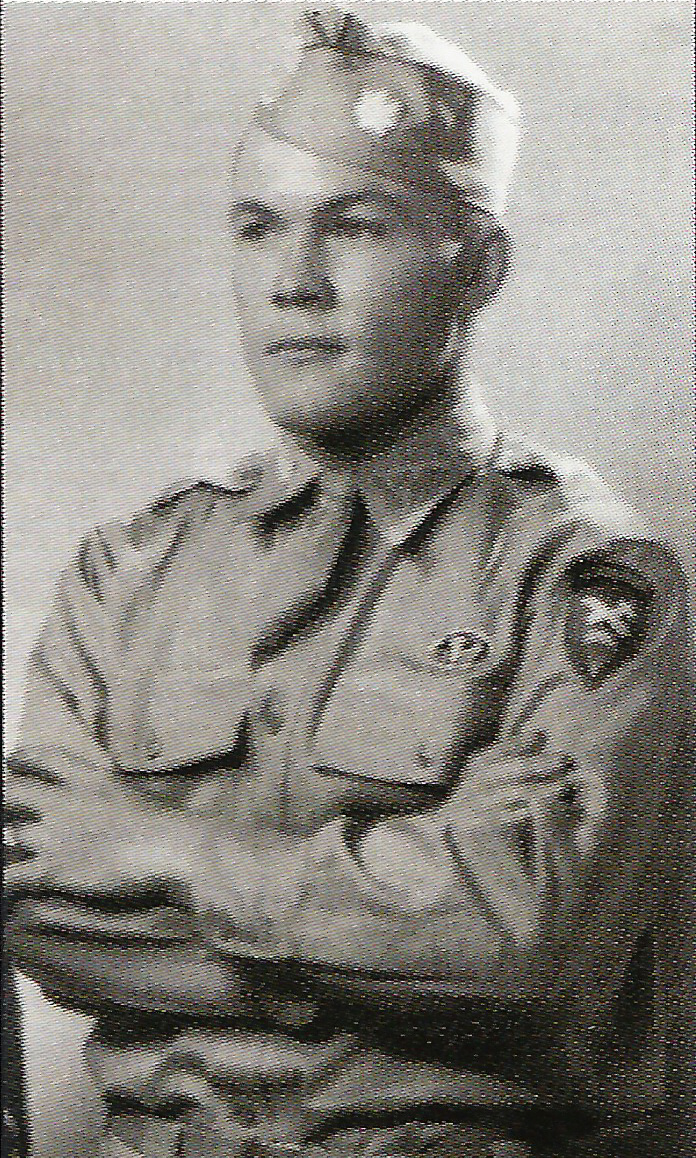 <- Lieutenant Colonel Shanley
<- Lieutenant Colonel Shanley
In the morning of June 6th, Lt. Malcom D Brannen from 3rd battalion killed Major General Falley during a rapid skirmish, near his HQ of Picauville, he was the commander of the 91th German division charged to defend the beaches.
During the night of June 12th, Lt. Goodale carried out the F Company across Douve River in Beuzeville-la-Bastille after a preliminary barrage of artillery of the 82nd Airborne. The remainder of the regiment followed in columns, and crosseed the river. Then, each battalion started on its own with a very specific mission. The 1st battalion moved towards Coigny as a unit of reserve to the regiment. 3rd battalion was established in defensive block to approximately 4 km in the south of Douve River. 508th PIR is its junction with the forces of 101st Airborne via a causeway to Baupte above the Douve River.
On June 15th, the regiment was raised of its sector. 3rd battalion was raised and transferred near St Sauveur le Vicomte on the right flank of division. The 1st and 2nd battalions are placed in reserve in the North-West of Etienville then in position of reserve in the south and the south-west of St Sauveur le Vicomte.
The mission of 82nd Airborne at this time was to cover the positions in the south to allow the Allied forces to cut off the Cotentin peninsula, isolated Cherbourg then to take the port. While GIs of 357th Infantry Regiment were across its positions, the 3rd battalion was placed on alert and moved to the south of Douve River to widen the bridgehead. On June 19th, the men cross the river in an amphibious attack and advanced to the south without meeting resistance.
Enemy observers, located in the top of the bell-tower of the church of Vindefontaine, the fring of mortars directs on the paratroopers. But “reds devils” upset the German positions and after having suffered some losses, attacks the village of Prétot the next morning.
The H Company which leads the attack at the head is stopped in its tracks by the fire of the enemy. Capt. Hillman C Dress, CO of the company, leaves uncovered to move his men.
Col. Mendez, itself, motivates his men by taking the lead in the attack, he will be awarded Distinguished Service Cross.
The Cotentin peninsula at this time is almost released. General Patton’s 3rd Army arrived in Normandy and is preparing to launch its major offensive towards the south. But, a series of ridges at the base of Cotentin serves as observation post to the enemy. Before the breakthrough, the Allied must take these heights. During the last part of June, the regiment remained in the south of Douve River in defensive position.
On July 3rd, in the morning, 2nd and 3rd battalion cross the positions of the 1st battalion in Bois de Limors and go up to the attack of hill 131, the point highest of Cotentin. The attack starts well, about midday, the regiment had invaded the first enemy positions and operates on the backs. At the evening of July 3rd, hill 131 was taken. The paratroopers have advanced of 5 km, under a constant rain. 508th PIR was in position of attack of the following hill in the north of La Haye-du-Puits awaiting the order to attack towards hill 95.
On July 4th with 7:40 a.m., the orders arrive. An artillery barrage to precede the attack began at 8:00 a.m. At the beginning of the attack, the artillery unit shelling the heights where the 1st battalion is scheduled to move, just leaving a narrow corridor to progress. The 1st Bn but also 3rd Bn progress in this corridor when the firing of supports stops. At this time, the Germans start a firing of barrage as well on the flank and on the front. The 2nd battalions suffered heavy losses and are forced to withdraw temporarily.
This situation rejects the weight of the attack on the men of the 2nd battalion. Advancing on the right flank of the regiment, the battalion attacks hill 95 by the North-East. Unfortunately, all the accesses to the hill are spaces with discovered which make it possible the enemy to observe the approach of the paratroopers.
Capt. Chester Graham must take the command of the battalion after it Lt. Col. Alexander was wounded. The men are under the bombs of enemy artillery. He gives the order to the F Company to move on the line at the base of the hill whereas the D Company take position to the left.
But the strength of the battalion is not enough to clean the top of the wooded ridge. A plan to isolate the enemy is set up with crossfire and sending sections on the ridge. Capt. Royal B Taylor ensures the command in the evening, and under cover of darkness, the battalion moves to the hill. With 5:00 a.m., the next morning, 2nd battalion finished cleaning the ridge. The enemy movements are still very important but the American artillery had stopped the shelling. Lt. Lloyd Pollette, CO the F Company unfortunately receives a great number of shells of American artillery. But despite this, his company has achieved its targets and said.
508th PIR remain at its positions until the arrival of 8th Infantry Division whose objective is the taking La Haye-du-Puits. At that time, the paratroopers is no more in contact with the enemy.
On July 13, 1944, “Red devils” embark on two LST at Utah Beach. Of the 2056 paratroopers in starting, 307 were killed in Action and 754 Wounded in Action. On July 15, they returned toward Southampton, to their camp base of Nottingham.
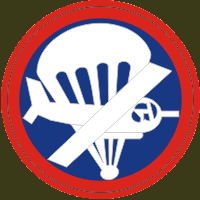 Holland –
September 44 – Operation
Market-Garden
Holland –
September 44 – Operation
Market-Garden
After 5 days of permission in England, the training begins again. Replacements also arrive at the regiment and they should be integrated. August 29th, a training jump is planned. It will be cancelled at the last minute. A little while later, the paratroopers receive the order to prepare containers of equipment and ammunitions. But after a few days waiting for the jump on Tournais, Belgium, the mission was cancelled due to the speed of Patton’s troops.
On September 9th, 1944, the British Field Marshall Montgomery proposed a plan baptized Market Garden designed to establish bridgehead to the Rhine River.
The operation was a combination between an airborne assault to take and hold the key roads and bridges of Holland and a motorized move.
But less than one week later, C-47 are again loaded. The Paratroopers fly away for Holland. On September 17, “Red Devils” are dropped over Nijmegen. The situation is completely different from their jump on Normandy. In a cloudless sky flying squadrons of aircraft carrying the regiment, they arrive on the Drop Zone without problem, and the green light turns on to indicate to the men that they can jump. The losses are very light, the firing of the FLAK resounds only at any end of the flight. Due to the penetration depth in the enemy lines, the surprise was total. Resistance on the ground, on the DZ was low.
On September 18, at mid day, the enemy starts again. It gives the assault on Nijmegen by all sides. The main road through the corridor is cut at its base preventing the British forces from holding a bridgehead over the Neder Rijn, in the north of Nijmegen.
A platoon of A Company, under the command of Capt. Jonathan E Adams destroyed an enemy post in responsible for the demolition of the bridge of Nijmegen. The remainder of A Company under the command of Lt. John P Foley caught the equivalent of an enemy battalion. The battle will be baptized “Diabolo’s Hill”.
On September 18th also, the 1st battalion helped by the D Company undertake the cleaning of the landing zone for the gliders. The first gliders arrive when the paratroopers repulse the last Germans.
The 3rd battalion will fight during 24 hours for the control of the village of Beek. The village changed hand several time, costing many life.
On September 23rd, the 3rd battalion enters to Germany by the plains to the east of Nijmegen with the support of British tank. The 24th, the regiment was relieved by 504th PIR. “Reds Devils” are sent near the village of Berg-en-Dal in the south of Nijmegen to reorganize.
The 508th PIR remained there until October 6th, the 2nd battalion benefits from it to attack the sector of Voxhil on the plains.
The 1st October, a little before midnight, the Germans start an impressive barrage of artillery. The depth is such that the HQ battalion was touched and that any communication with the battalion was broken. Then, after midnight, the Germans launched the offensive. The first lines of the paratroopers are submerged. The objective of the Germans is the city of Groesbeek, 3km in the south-west of the positions of the second battalion. The catch of the city would be a disaster for the Allied. They would be forced to fold up their forces located at the east of Nijmegen.
But thanks in particular to the courage of the men of F Company under the orders of Lt. Polette, the positions are restored.
On October 6th, the regiment was detached from 82nd Airborne to be attached to 50th British Infantry Division in a area in the north of “Island” Arnhem-Nijmegen. From October 6th to November 11th, the 508th PIR remains in defensive position with only two short periods of rest in the city. Although there have no big offensive, every night, several patrols are inserted deeply in enemy territory. Some of them remain there sometimes from 24 to 48 hours and always under the fire of artillery.
On November 11th, the regiment was sent to Oss, Holland. The trip will take off because of the lack of means of transportation is 30 km. November 14th; the 508th PIR arrived at Sissonne, their new base camp in France.
The losses for the campaign of Holland amounts to 146 killed in action, 469 wounded in action and 66 missing in action, is a loss of 681 men on a starting strength amounting to 2000.
In France, the majority of the equipment is replaced. After a moment to rest, the training begins again. Parades are organized. Teams of sport created. In a few words, it seems obvious for the men that they have a long period of rest.
![]() Belgium –
Decembre 1944 – Battle of the Bulge
Belgium –
Decembre 1944 – Battle of the Bulge
On December 16, 1944, the Germans launched an offensive by The Belgian Ardennes surprising the Allied Forces.
82nd Airborne was in alert at the evening of December 17th. At the dawn on the 18th, the “Red Devils” are ready, as well as they can. But they missed winter clothing’s, the men embarked in trucks with the hottest equipment which they had.
On December 19 in the morning, 82nd entered in Belgium and moved towards north while 101st was sent to Bastogne. With the paddle of 19, the paratroopers unloaded trucks with Werbomont in Belgium.
The German advance separated the two airborne units.
On December 18th, the 508th was sent to give a position near Chevrons that it will reach 19th. Until December 23rd, the regiment does not have a contact with the enemy. A defensive position is established along ridge of Thier du Mont in the west of Salm River. 82nd Airborne has been placed for formed a corridor of restocking for 106th Infantry Division and 7th Armored Division, which were dug by the German attack. Positions of 82nd resemble a “finger” with the end, 508th PIR.
On December 21st, it snows; the Germans launch a small attack in the sector of 508th. The largest unit with being evacuated is the “TASK FORCE JONES” composed of 7th Armored (400 men) elements. The position was held until December 24th, when he was ordered to fall back on another line of defense. The 508th began its fold with 9:00 p.m. During the retreat, it leaves units as a cover for size of a section per company. The majority of its sections will be able to be folded up without difficulties except those of the 1st battalion which is attacked by two enemy battalions just before midnight. This is probably the wildest combat that the unit knew. Lt. Lamm, of A Company leads its section in an incredible combat. From time to time, during the night, some sections are submerged. The attack is maintained throughout the night to allow the regiment to join its positions and units remained behind to retreat.
The Christmas Day, around 7:00 a.m., the sections which covered the withdrawal join lines with relatively few losses. At the evening, the Germans arrived on the new lines held by A and D Companies. After heavy combat, the Germans retreated leaving behind most of their equipment.
On December 28, around 1:15 a.m., they strike again. The next morning, before the lines of the G and F Companies are of Waffen SS. The Capt. Russel C Wilde, CO G Company informs his major which its lines are attacked when an artillery barrage cutting communication lines.
The Lt. Col. Mendez took his radio operator to organize a battle plan. Sections are encircled. But thanks to the 155mm howitzers that was attached to 508th PIR the previous morning. By using the observers of the 3rd Battalion’s sector, they fired with a remarkable precision on the Germans. Around 4:00 a.m., the enemy withdraws.
On January 3, a large opening organized by the 1st Army in The Ardennes. To this date until January 7th, the 508th PIR is put in reserve. On January 7th, the regiment launched an attack with the 504th PIR to take again the ridge of Thier-du-Mont left one week before. The G Company is with the point of the attack. The ground was uncovered. The remainder of the regiment was following in column. All units go towards their objectives. The 88 Germans gun start their firing suddenly. The G Company is heavily touched when it is less than 500 meters of its objective. But it knows that if it stops, it will be done massacred. It darkens when the enemy suffered heavy loss.
On January 10th, the regiment was relieved by units of 75th Infantry Division and moved near Chevrons to rest. In not even a month, more than 900 men are missing including 40% victims of the cold and the weather conditions.
On January 21st, the 508th PIR was back in front for three days. The regiment went to Deidenberg. It will be relieved by units of 2nd Infantry Division.
On January 28th, 82nd Airborne launches an offensive against the heart of Germany. The first objectives are defenses of the Siegfried line. During this period the climatic conditions are terrible! Every man who is wounded will be dead before being evacuated!
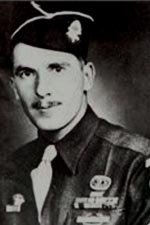 <- 1st
Sergeant Leonard A. Funk Jr.
<- 1st
Sergeant Leonard A. Funk Jr.
On January 29th, at dawn, the 1st battalion engages the battle on all sides of the small village of Holzheim. A patrol of 2nd battalion is captured and brought to the center of the village. The B Company attacked the village from the north, C Co by south-west. The village was quickly taken over with 80 prisoners.
But thanks to a ruse, German speaking English manage to release the 80 prisoners and to make captive the 4 guards. The First Sergeant Leonard Funk Jr., patrolling around the building was surprised to feel the barrel gun of a machine-gun pushed against its kidneys by a German officer. Pretending to obey the order, he slowly charged his thompson and in a fast movement the officer was killed. Then, he released his men by killing 21 soldiers. The action of the sergeant allowed to the men to quickly control the situation again. For this action, the First Sergeant Leonard Funk was awarded the Medal of Honor.
The 1er February 1945, “Reds Devils” have achieved their objectives. On February 4th, 99th Infantry Division enters in Germany and the sector invades. The regiment was sent to Rencheux for a few days of rest. Then, the unit moves near Aachen in Germany. The regiment constitutes the spearhead of a projection on western banks of the Roer River who constitutes the last obstacle before the tanks can run in the plains of Cologne.
On February 10th, at 2:00 a.m. of the morning, the 1st battalion starts the combat. The C Company suffered very heavy losses when it penetrates in a minefield and under machine-gun and mortar starts the fire. The company is withdrawn and attached to A Company.
A Company also will be inserted in the minefield and despite the detectors suffered losses. The mines are made of wood, the detectors cannot nothing make.
At 9:30 a.m., the breakthrough succeeds through the 2nd battalion. At nightfall, any resistance to the west of Roer River is eliminated. The regiment remained there until February 18th.
On February 18th, the 78th Infantry Division crossed the Roer River; “Red Devils” are sent to near Aachen. From there, they embark in 40 and 8 cars for their camp Sissonne.
Back at camp Sissonne, paratroopers were taken to slacken until April. Camp Sissone is transforme into a hospital. The paratroopers will stay in a tent city right at side. Some lucky ones have permission to Brussels, Paris or England.
On 14th and 15th of March, the entire regiment carries on jump training. This one will finish badly for some paratroopers. The last aircraft was caught in turbulences hitting several paratroopers.
On April 3rd, “Red Devils” are detached from 82nd Airborne to be attached to 1St Allied Airborne Army and put on alert. The mission was a jump into enemy territory to free prisoners of war threatened to be carried or moved away from the American lines. But the announcement of the armistice intervened while the paratroopers were preparing to embark.
The 508th remained in Chartres until the end of May 1945. After a brief stay with Sissonne, the 508th was sent to Frankfort-Am-Main to occupy the city and serve as honor guard for the General Eisenhower commander of SHAEF. The men will live in comfortable apartments with special services. It was the best assignment of the entire theatre operation.
The 508th remained in Frankfurt until November 1946. On November 24th, “Red Devils” leave for Camp Kilmer, New Jersey where the regiment was deactivated on November 25th, 1945.

United States :
- Presidential Unit Citation (Army) with tie for the action in Cotentin Peninsula (from June 6th to 9th 44)
France:
- French Military Cross WW2, with palm for action in Ste Mere Eglise (June 5, 44
period)
Decision
159 of the 6/04/46, the President of the government provisional of the French
Republic and validated by the USA according to DA GO 43, 1950
- French
Military Cross WW2, with palm for action in Cotentin (period 6 June 20, 44)
Decision
160 of the 6/04/46, the President of the provisional government of French
Republic DA GO 43, 1950
-
Fourregere, 2 citations, with the colors of the French Military Cross WW2
Decision 161, of the President of the government provisional of the French Republic 6/04/46 and validated by the USA according to DA GO 43, 1950
Holland :
-
Military Order of William (Degree of knight of 4th class) for Nijmegen 1944
(period 17 seven - Oct 4, 44) ministerial decree of the Netherlands of the
8/10/45, to publish in GO 125, HQ 82nd AB Div. 12/10/45 and validated by the USA
according to DA GO 43, 1950
- Lanyard Oranje of the Netherlands (period 17 seven - Oct 4, 44)
decree ministerial of the Netherlands of the 8/10/45 and validated by the USA according to DA GO 43, 1950
Belgium:
- Belgian Fourregere 1940 (over the period 17 Dec 31 44 and 1-23 janv. 45)
decree of the ministry for Belgian defense national n° 1034 of the 4/10/45 to publish in the GO 123, HQ, 82nd AB
Div. 8/10/45 and validated by the USA according to DA GO 43,
1950
- Citation on the Belgian army's agenda for action in the Ardennes, DA GO 43, 1950
- Citation on the Belgian army's agenda for action in Belgium and Germany, DA GO 43, 1950
- Citation on the Belgian army's agenda for action with St Vith, DA GO 43, 1950
